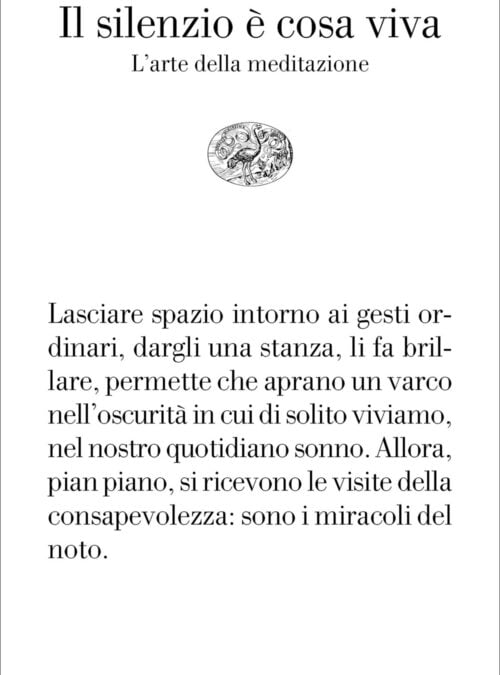Il silenzio è cosa viva. L’arte della meditazione
by Candiani Chandra Livia, Candiani Chandra Livia, Candiani Chandra Livia
In Chandra’s world, where words are also images and poetry, meditation is above all staying still; sitting down and humbly and patiently following our breath, welcoming it in silence, knowing without thinking. To meditate is to follow the movements of our mind, tostop bustling around in actions, thoughts, worries about the future, or memories of thepast. To meditate doesn’t mean creating a void around ourselves. On the contrary: it means not separating the worlds, not dividing what we consider spiritual from what we consider quotidian. And the daily actions of cooking, washing the dishes, making phone calls, housecleaning, washing, reading, and writing can become forms of prayer. In short, it means staying within ourselves, inside everything we are at that moment, deliberately. We often think that the solution to pain, anxiety, and fear lies elsewhere, but the solution to pain lies in the pain (and the solutions to anxiety and fears lie in the anxiety and the fears). By listening to them, inhabiting them, savoring them, they stop being strangers and slowly become inconvenient, impetuous, and stormy guests, and, ultimately, a part of us.
- Publishing house Einaudi
- Year of publication 2018
- Number of pages X-132
- ISBN 9788806237608
- Foreign Rights Valeria Zito
- Foreign Rights sold The Netherlands (Kosmos)
- Ebook www.einaudi.it
- Awards Premio Montale per l'inedito, Premio Camaiore
- Price 12.00 €
Candiani Chandra Livia, Candiani Chandra Livia, Candiani Chandra Livia
Chandra Livia Candiani is a poet, she translates Buddhist writings and teaches meditation. She has published the poetry collections Io con vestito leggero (Campanotto 2005), La nave di nebbia. Ninnananne per il mondo (La biblioteca di Vivarium 2005), La porta (La biblioteca di Vivarium 2006), Bevendo il tè con i morti (Viennepierre 2007), La bambina pugile ovvero la precisione dell’amore (Einaudi 2014), and Fatti vivo (Einaudi 2017).






